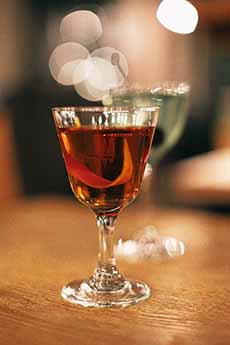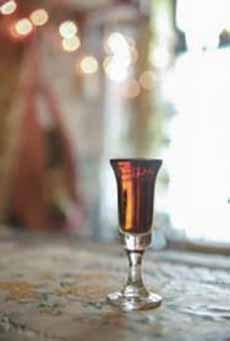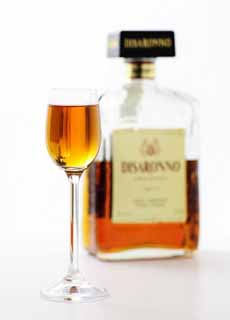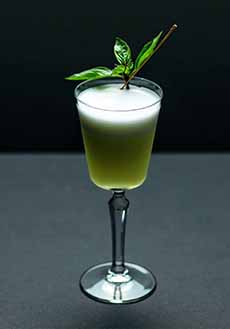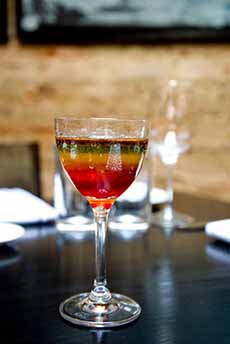What Is Liqueur, & The History Of Liqueur, For National Liqueur Day
|
October 16th is National Liqueur Day, so celebrate with a shot of your favorite. But first, what is a liqueur? Pronounced lih-CUR in French and lih-KYOOR by some Americans, it’s one of a group of after-dinner drinks that also includes eau de vie, cordial, and schnapps. Most people—including American producers and importers—use these terms interchangeably. But there are differences. A liqueur, and its “siblings” described below, is an alcoholic drink composed of a neutral distilled spirit, brandy, or whiskey, plus additional flavorings. These typically include sugar or honey, plus fruits, flowers, herbs, nuts, roots, seeds and spices, and vegetables, or a combination. Other flavors, such as chocolate, coffee, and cream, have been crafted into popular liqueurs. The ingredients of one of the earliest liqueurs, Chartreuse, made by monks from an ancient recipe, incorporate 130 different plant products, including barks, herbs, leaves, and roots, plus brandy, distilled honey, and sugar syrup. (It’s the only liqueur in the world with a completely natural green color.) Benedictine, an herbalist’s creation of plants and spices, contains up to 75 ingredients. > See more liqueur history below. > The difference between liqueur, cordial, eau-de-vie, and schnapps is also below. Often served with or after dessert, liqueurs are un-aged, beyond a resting period during production, when necessary, to allow their flavors to mingle. The French word liqueur derives from the Latin liquifacere, to dissolve or make liquid. Before the discovery of distillation, this likely referred to the infusion of organic matter with water or wine. The alcohol content of modern liqueurs ranges from 24% to 60% alcohol by volume (A.B.V., which is doubled to get the proof, i.e. 48 to 120 proof). Alcoholic beverages were first discovered, naturally fermented from fruits and grains, and were enjoyed as far back as prehistoric times. Chemical analysis has confirmed that the earliest known alcoholic beverage was a fermented drink of rice, honey, and hawthorn fruit and/or grapes. The residue of the beverage, dated ca. 7000–6600 B.C.E., was recovered from pottery in Jiahu, a Neolithic village in China’s Huang He (Yellow River) Valley, the birthplace of Chinese Civilization [source]. This currently predates by 500 years the earliest evidence of grape wine from the Middle East [source]. Recipes for liqueurs have been found in ancient Egyptian tombs and Greek scrolls. But we owe thanks primarily to the monks of Europe, particularly Italian monks during the 13th century. Chartreuse, noted above, is even older. Considered the world’s oldest distillery, dating to 1084 C.E., the liqueur was made by Carthusian monks at the order’s head monastery in the Chartreuse Mountains in the French Alps, north of the city of Grenoble [source]. The liqueur was developed as a way to infuse herbs for medicinal use. As the trade routes opened between Asia, the Middle East, and Europe, a variety of spices and other ingredients such as ginger and orange peel, were incorporated into liqueurs. Some liqueurs were used for their aesthetic qualities, and others were for medicine, such as digestive aids. They also became fashionable drinks. They also became fashionable. After Catherine De Medici moved from Florence to France to wed the future King Henry II (in 1533), she introduced the past time of liqueur drinking to the French court. Many households had a small distillery and family recipes. By the early 19th century, branded liqueurs were produced commercially and affordably, so only families who guarded their recipes continued to make them at home. Today, there are countless liqueurs made the world over. The Gaelic uisce beatha, pronounced ISH-ka BYA-ha, means “water of life.” The pronunciation evolved into the more familiar term, whiskey. The Russian term zhiznennia (life) voda (water) was distilled down (that’s a pun) into “vodka.” It also means water of life (the literal translation of vodka is “little water”). |
|
|
|
CHECK OUT WHAT’S HAPPENING ON OUR HOME PAGE, THENIBBLE.COM. |
||
